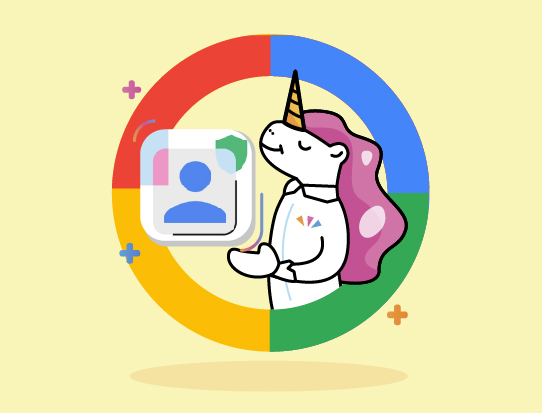Search intent is the general meaning behind a search query. It’s very similar to what you would ask in Google Search when typing something like “how to make bread?” or “what time does supermarket close?”
Search engines are smart, but they’re still trying to figure out how to best answer your questions. Because of this, there are many different types of search intent:
- Informational
- Navigational
- Transactional
- Commercial
What is Search Intent?
Search intent is the term that marketers coined to refer to a user’s intended goal or desired outcome when performing a search query.
In other words, it’s what drives people to use Google and other search engines in the first place. Once you have some understanding of what people are looking for when they search on Google, Bing, or any other search engine, then you’ll be able to tailor your marketing strategy accordingly!
Why Does Search Intent Matter?
Search intent is important because it tells you what the user was trying to learn or do when they typed in their query. Search engines are always trying to provide people with exactly what they want. Knowing their search intent can help marketers improve click-through rates on paid ads and organic rankings for SEO efforts.
From a business standpoint, it’s like this: the more you know what your target market is looking for, the better you can strategize on how to reach them.
It can be difficult to identify what someone wants from their query. But knowing which keywords they’ve used (or not) can give you some clues or hints on what their intentions are.
These can also help answer questions like:
- “What do my prospects want?”
- “How will understanding their intent help me provide better customer service?”
- “At which stage of the marketing funnel are they in right now?”
- “What should I be selling them next?”
- Understanding how your audience interacts with your content via keyword research helps you create more compelling content.
How Can I Identify Search Intent?
Search analytics platforms like Search Console, Searchmetrics, or SEMrush all provide this data in their reports. They have data on the number of times certain keywords were searched for over a set time period.
Google Trends also shows you how often specific search queries happen and provides demographic information on who’s searching for that term. Search terms often show some overlap between the different types of intent as well as some crossover from other keywords. Marketers are also trying to identify what people want when they type in “Facebook” or search for the term, “SEO.”
You can try to identify the search intent by understanding the SERP (Search Engine Results Page). When you type in the keyword you’re targeting in the search bar and see the result page, you can then identify the type of search intent based on the SERP.
Different Types of Search Intent?
There are 4 different types of intent that you can see identify from the result page. Keep in mind that these examples only cover organic searches and not paid ads:
- Informational: “how to” queries, questions about products, services, or other topics people want more information on.
- Navigational: brand searches that indicate the user is looking for a specific website.
- Transactional: these are purchase-related terms that show the user is looking for information on a product or service they want to buy.
- Commercial: these are terms that show the user wants to find out more about products and services so they can purchase them later on.
1. Informational
Informational searches are what you would expect them to be; someone who wants information. These queries are usually very specific and require a simple answer. Users with informational intent have a specific question in their mind or want to know about a specific topic. Search engines will give you a list of links to help answer your question. An example of an informational search is “how many ounces in a cup?”
2. Navigational
A navigational search is when someone types in the name of a company, place, or person. Search engines will give you results with links to pages that are relevant to whatever you type into Google Search. Navigational intent users want to visit a specific website. An example of this can be a user typing in a specific brand such as “Zenyum“, where users are usually on their way to their website.
3. Transactional
Transactional queries are very different from other types of search intents because they don’t seek information. Most of the people who are searching with this intent are with the purpose to buy. Oftentimes, they already know exactly what they want to buy, hence they usually type in the exact product/service name in the search bar. An example of this type of search intent would be “iPhone 13 Pro”
Search engines will then give results that include the different steps needed to achieve whatever it is you are looking for, and it’s up to the user to take those steps.
4. Commercial
The fourth and final type of search intent is known as commercial. People with commercial intent already have the intention to buy in the future and are currently doing their research and considering several brands/products. These people will eventually have transactional intent but need more time and convincing, that’s why they are doing the research on the product/service first.
Search engines will give results that include products and services related to what it is you typed into Google Search. These terms are usually fairly broad, but they can be very specific depending on the query. An example of this would be “best laptop 2021 for work.”
So, how does each type of intent affect digital marketing strategies?
Search engines look at these keywords and determine what type of user is typing in a specific term based on their location, age, gender, and other factors.
For example, someone looking for Nike shoes with blue stripes would type that into Google Search. Search engines will look at where the user is at and their location to determine what they are searching for. You can see below how search queries fit into different categories based on certain factors like demographics, device usage, and more:
- Males between 18 – 34 years old who live in the United States
- Searching on a smartphone
- Search queries include words like “shirt,” “jeans,” and more.
As you can see, marketers can use this information to tailor their content in order to connect with users in different ways.
Let’s go back to the example of someone searching for Nike shoes with blue stripes. A marketer can use that information to create more content related to Nike products and services since the searcher is likely looking for something specific. Search intent plays an important role in digital marketing by helping marketers connect with users on a personal level when it comes to what they are searching for online.
Final thoughts
Search intent is the key to understanding what your customer wants. With search engines, people are telling you exactly what they want by typing in their queries. You can take a step further by looking at what this means for your business and how it impacts every step in the buyer journey. After all, search intent is all about figuring out why people are searching – or more specifically what they want to find on Google.
Understanding each type will help you identify which keywords to target with your marketing efforts because different strategies can work better depending on the goal customers have when they’re doing their research before making a purchase decision.
We will be more than happy to answer any questions regarding search intent. If you have one, reach out to us at kaliber.asia or explore our blog.kaliber.asia.















